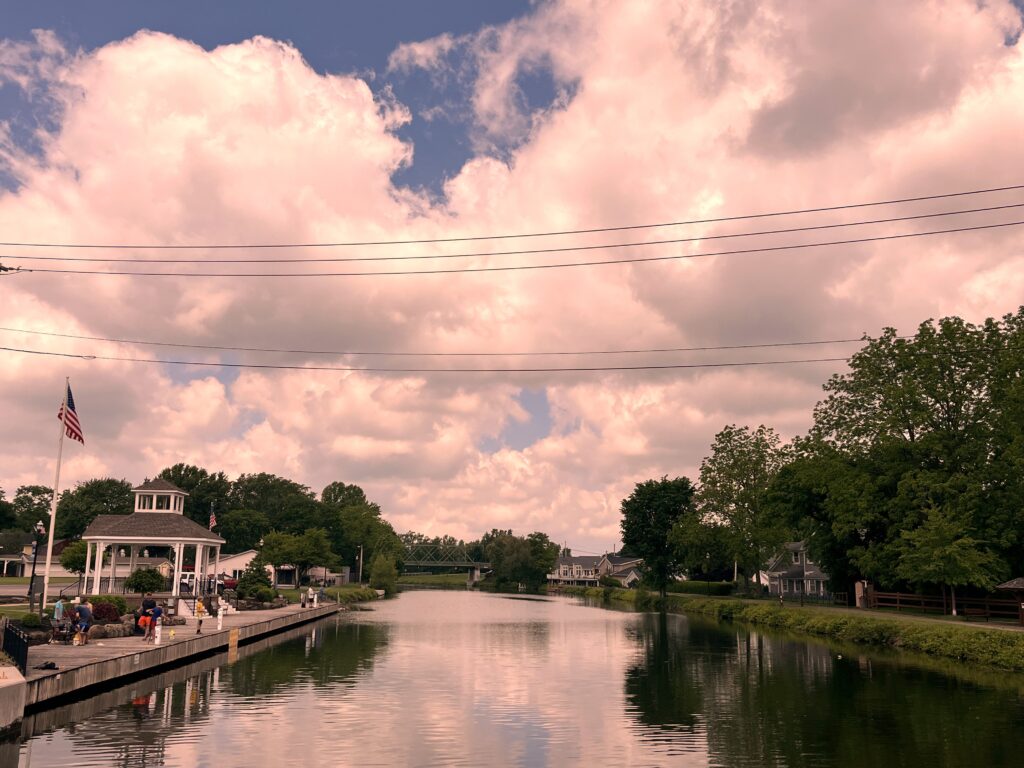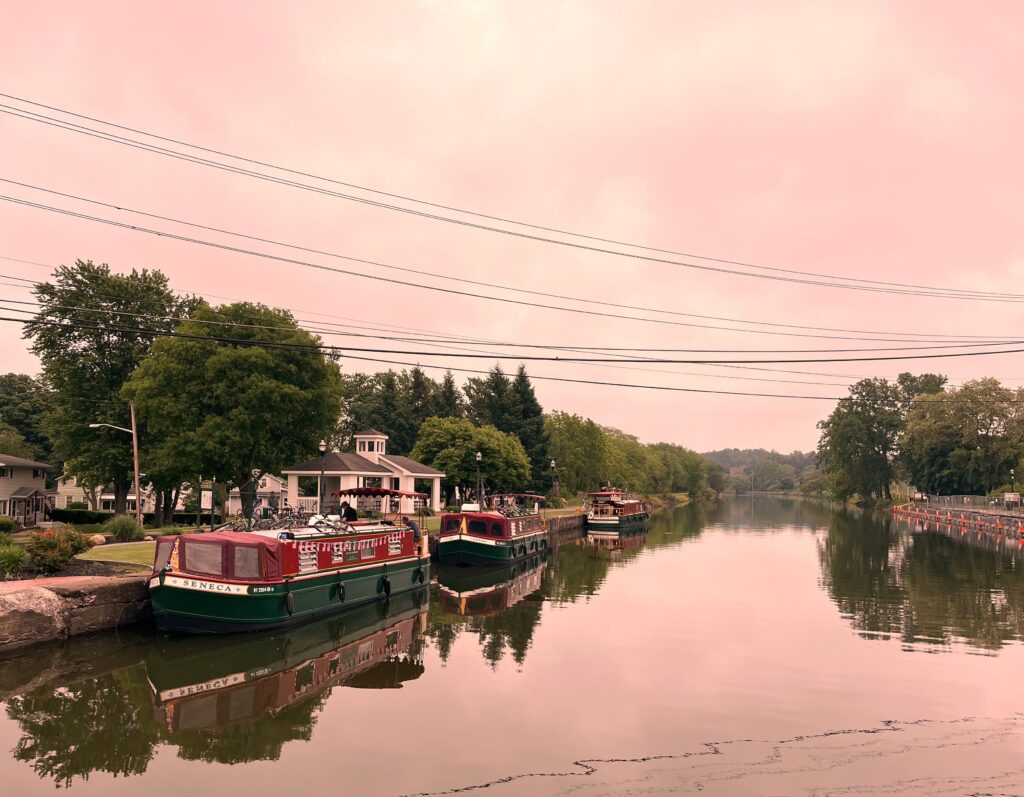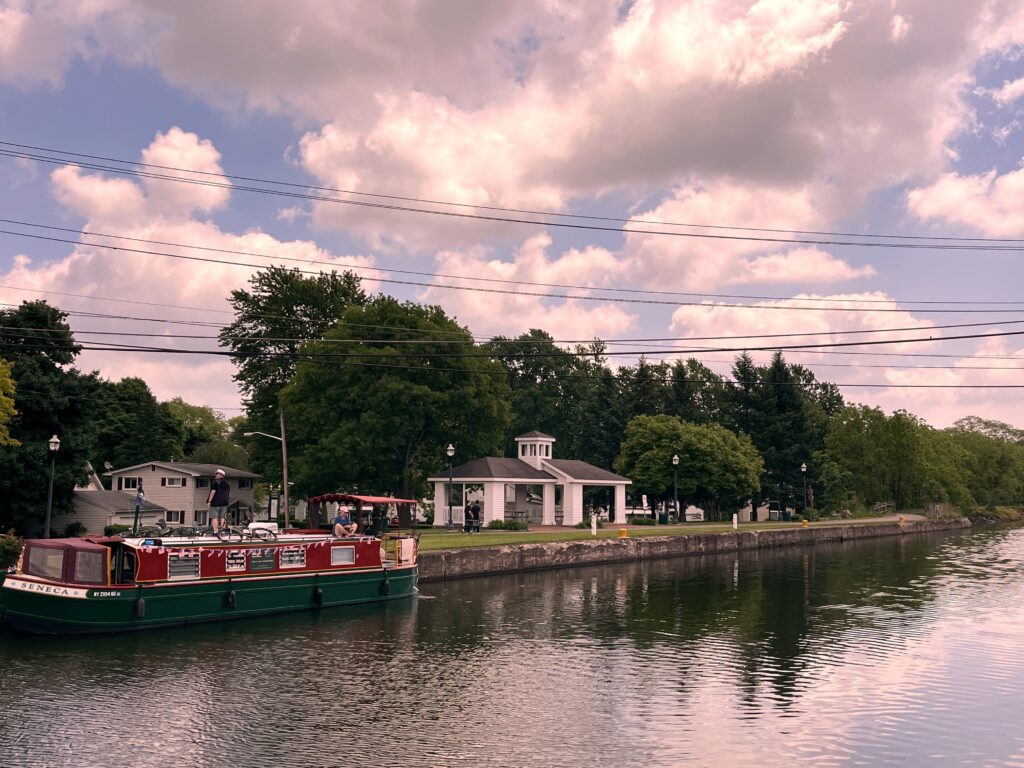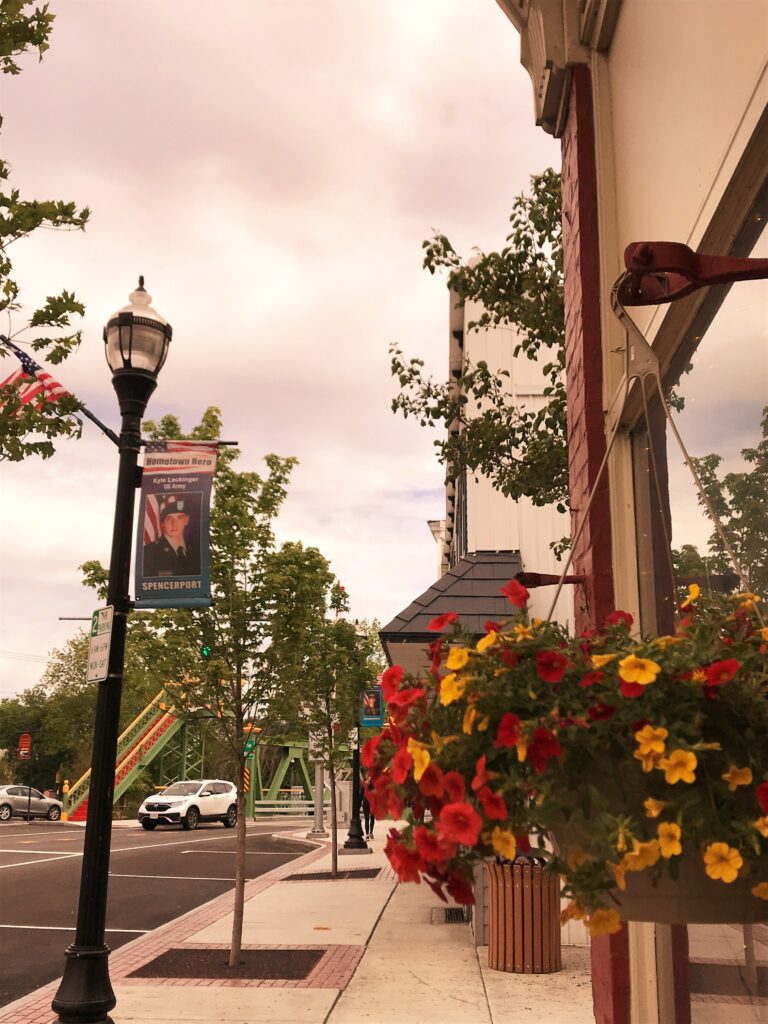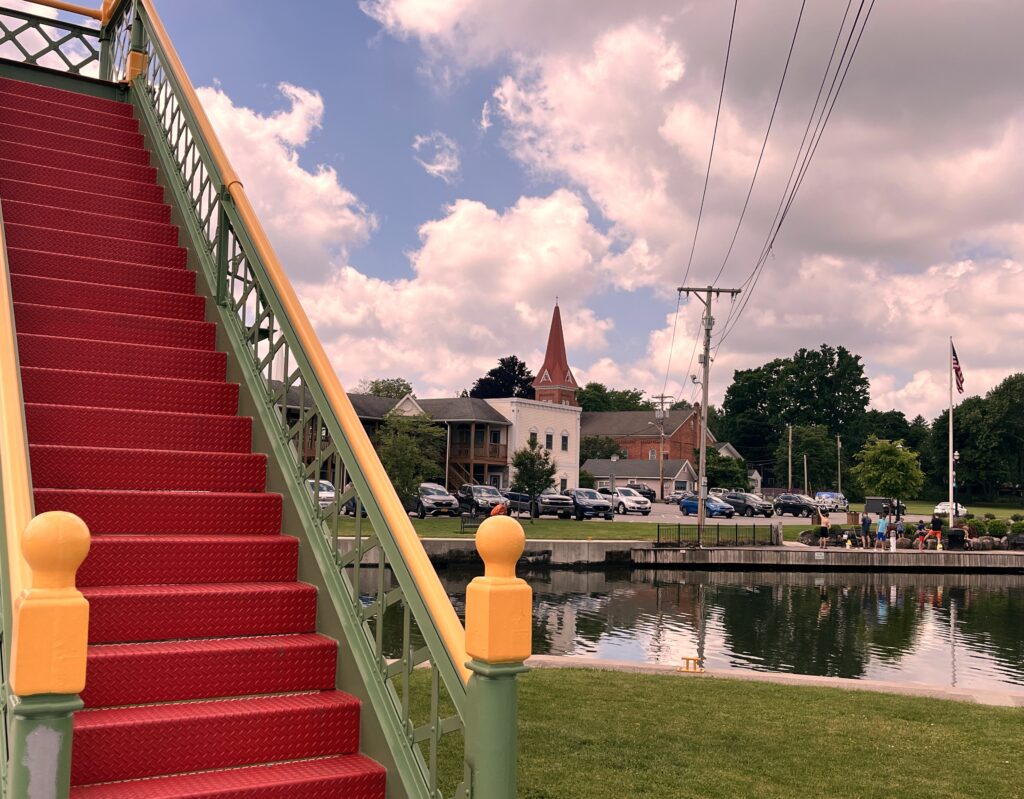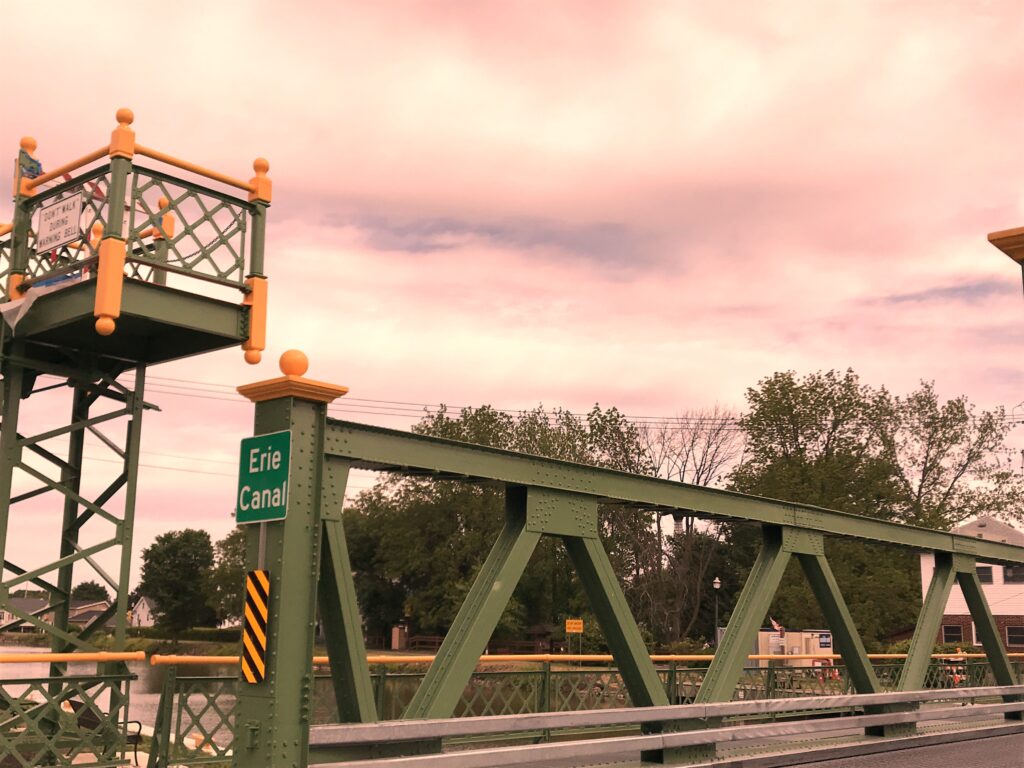Just about every time we cross the New York state line on our way to my husband’s boyhood home in Rochester, he starts singing some mishmash of the chorus of the old Eerie Canal song.
Loooooowwww bridge, everybody down. . .Low bridge. . .15 miles on the Eerie Canal!
I guess every fourth grader in New York learns about the Eerie Canal as they study state history. As well they should. It was a truly big deal. I was introduced to its significance on my first trip to the Albany area. I went home with my friend Mike to Clifton Park during winter break in grad school. It was mid-January in 1987, and the northeast was still a bit stunned after a blizzard that had dumped three feet of snow. The two things I remember most vividly about that long-ago excursion were these: the snow (so much snow), and the Eerie Canal.
Mike had been a fan of the canal since his elementary school days, and he wanted to make sure I grasped its importance. It was a marvel of engineering, he stressed, created under extremely demanding circumstances. Irish immigrants provided the bulk of the back-breakingly difficult, poorly paid labor. They toiled with little more than pick axes, shovels, plows and wheelbarrows, using the occasional ox or mule. A stump puller was designed to assist in tree clearing. The original Canal, forty feet wide and four feet deep, took eight years to build. It was completed in 1825, two years before the country’s first railroad was begun. The Canal links Lake Eerie with the Hudson River, and from there, in New York Harbor, meets the Atlantic Ocean. Flat-bottomed packet boats heavily laden with products like wheat, flour or lumber were pulled by mules along the towpath that bordered the waterway. (Their descendants are today’s gargantuan ocean-going container ships, like the one that recently destroyed the Key Bridge in Baltimore.) The Eerie Canal spurred the development of the Great Lakes region, as well as further westward expansion. It was an early driving force that turned New York into an economic superpower and helped earn it the nickname “Empire State.” It brought wealth to the towns it bordered, from Albany to Buffalo.
Railroads and highways gradually replaced the Canal as a trade route. These days it’s a busy recreational waterway. The mules are gone, but brightly painted packet boats, similar to the old canal boats, are often moored along the banks. These wide, low boats, which may be rented, are popular for touring. And on the Eerie Canalway Trail that runs along the water, it’s possible to cycle the entire three hundred sixty mile-length of the Canal.
The Canal still serves as a central focus of many villages in upstate New York. The colorful Union Street bridge in Spencerport, above, is just steps away from the center of town. A horn sounds when the bridge is about to be raised to allow a taller boat to pass under it. The Spencerport Depot and Canal Museum hosts displays about the Canal and its history, and serves as a welcome facility for boaters. Our nephews are often among those fishing from the banks of the Canal. It’s common to see kids bicycling along, carrying their lunches and fishing poles, as if they were emerging from a Norman Rockwell painting. Another unexpected sight to my citified eyes is that of vending machines selling live bait.
Old and new come together seamlessly and captivatingly in Eerie Canal towns.
The Canal and its towns are well worth a visit!

